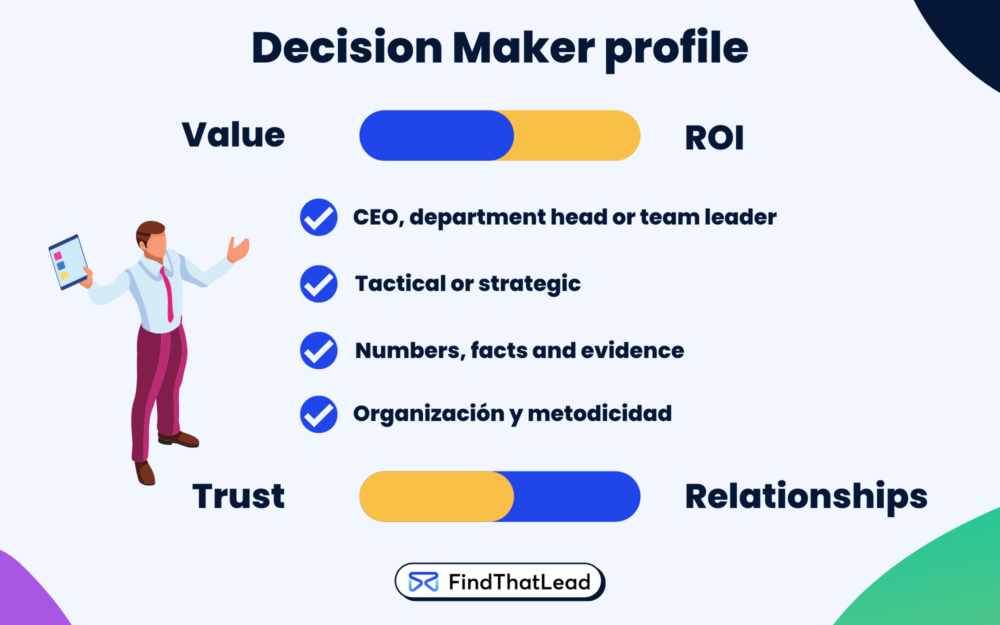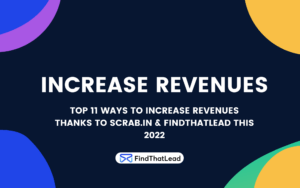Today, we’re going to delve into an important topic in the world of business, decision makers. These are the persons who have the power to make significant decisions within an organization. They’re the ones who can give the green light to new ideas, strategies, and purchases. Understanding who these decision makers are, what they care about, and how to effectively reach them can be a game-changer in the realm of B2B sales.
So, if you’re ready to unlock the power of decision makers and drive your sales success to new heights, keep reading. We’ve got a lot of ground to cover, shall we start?

Understanding the Role of a Decision Maker
Understanding the role of a decision maker is the first step in effectively approaching them. It’s about getting a clear picture of who they are, what they do, and how they make decisions. Let’s delve deeper into these aspects.
What is a decision maker?
A decision maker is a person who carries the authority to make substantial decisions within an organization. They’re the ones who give the final nod to new ideas, strategies, and purchases. But the role of a decision maker isn’t confined to just making decisions – it’s a role that demands leadership, foresight, and a profound understanding of the business.
Decision makers are leaders who steer the organization’s direction. They’re the ones who establish the strategy, inspire their teams, and propel the business toward its objectives. They’re accountable for the outcomes of their decisions and are often the ones who have to make challenging choices when faced with hurdles or obstacles.
But decision makers are also visionaries. They’re the ones who look ahead, anticipate changes, and seize opportunities. They’re the ones who set the vision for the company and inspire others to work towards it.
And perhaps most importantly, decision makers have a deep understanding of their business. They know the intricacies of their operations, the needs and desires of their customers, and the trends and challenges in their industry. They use this knowledge to make informed, strategic decisions that drive the success of the business.
Being a decision maker is a significant responsibility, but it’s also an opportunity to make a real impact on the organization and its future.
Defining a Decision Maker in a business Context
In a business context, a decision maker is often someone in a position of power. This could be a CEO, a department head, or a team leader. These individuals have worked their way up the corporate ladder and have a deep understanding of the business and its operations.
But being a decision maker in a business context is also about understanding the market, the competition, and the customers. It’s about being able to analyze data, identify trends, and make strategic decisions that will give the company a competitive edge.
Different types of Decision Makers in an organization
Just as there are different types of businesses, there are also different types of decision makers. Some decision makers are strategic, focusing on the big picture and making decisions that will shape the future of the company. They’re the ones who set the vision, define the strategy, and guide the direction of the business.
Other decision makers are more tactical, focusing on the day-to-day operations and making decisions that keep the business running smoothly. They’re the ones who manage resources, solve problems, and ensure that the business is meeting its short-term goals.
Understanding the different types of decision makers can help you tailor your approach and communicate more effectively.
Approaching Decision Makers: Strategies and Best Practices
Approaching decision makers is an art. It requires a deep understanding of who they are, what they care about, and how they make decisions. But it’s not just about understanding, it’s also about strategy. How do you get their attention? How do you build a relationship? How do you make a compelling pitch? Let’s delve deeper into these questions.
Identifying the right Decision Maker
Identifying the right decision maker is the first step in the process. This might seem simple, but in a large organization, there can be multiple decision makers, each with their own area of authority. Identifying the right person requires a deep understanding of the organization and its structure.
It might involve researching the company, networking with employees, or even reaching out directly to potential decision makers. It’s a crucial step and one that can set the tone for your entire approach.
Once you’ve identified the right decision maker, it’s important to learn as much as you can about them. What are their responsibilities within the organization? What challenges are they facing? What are their goals? Understanding these factors can help you tailor your approach and make a more effective pitch.
Tailoring your pitch to the Decision Maker’s style
Every decision maker is different. They each have their own style, preferences, and decision-making process. Understanding these factors is key to tailoring your pitch.
Some decision makers prefer a detailed, data-driven pitch. They want to see the numbers, the facts, and the evidence. They want to know exactly how your product or service can benefit their organization. For these decision makers, it’s important to come prepared with data and evidence to support your claims.
Other decision makers might prefer a more high-level overview. They want to understand the big picture, how your product or service fits into their overall strategy. For these decision makers, it’s important to clearly communicate the strategic benefits of your product or service.
Building Trust with Decision Makers
Building trust with decision makers is crucial. This isn’t about making a quick sale – it’s about building a long-term relationship. Trust is built over time, through consistent, reliable behavior. It’s about showing up, following through, and delivering on your promises.
Building trust also involves showing that you understand and care about the decision maker’s needs. This means listening carefully, asking thoughtful questions, and showing empathy. It means being responsive and available, and providing support when needed. It’s about proving that you’re not just interested in making a sale, but in helping the decision maker achieve their goals.
What Does a Decision Maker Care About?
Understanding what a decision maker cares about is crucial to effectively approach them. It’s about getting inside their head and understanding their motivations, their concerns, and their goals. Let’s delve deeper into what different types of decision makers might care about.
Rational Decision Makers: Value & ROI
Rational decision makers are all about the numbers. They’re looking for value and a strong return on investment (ROI). They want to know that the decisions they’re making are going to benefit the organization in the long run.
For these decision makers, it’s important to clearly demonstrate the value of your product or service. This might involve providing data on cost savings, increased efficiency, or potential for growth. It might also involve showing how your product or service can solve a problem or meet a need within the organization.
But it’s not just about showing the potential benefits – it’s also about proving them. Rational decision makers want evidence. They want to see case studies, testimonials, or data that supports your claims. The more evidence you can provide, the more likely they are to see the value in your product or service.
Intuitive Decision Makers: Trust & Relationships
Intuitive decision makers, on the other hand, rely more on their gut feelings. They value trust and relationships above all else. They want to feel confident in the people they’re doing business with and they want to know that those people understand and care about their needs.
For these decision makers, building a strong, genuine relationship is key. This involves showing that you understand and care about their needs. It involves listening carefully, asking thoughtful questions, and showing empathy. It also involves being reliable and consistent, and proving that you can be trusted.
Building trust with intuitive decision makers also involves showing that you understand their business and their industry. This might involve demonstrating knowledge of industry trends, challenges, or opportunities. It might also involve showing that you understand the decision maker’s role and responsibilities within the organization.







 BONUS:
BONUS: The Challenge: Join this free course and I guarantee that after 5 days you will have the necessary skills to start generating B2B clients Growth Hacking and Prospecting techniques.
The Challenge: Join this free course and I guarantee that after 5 days you will have the necessary skills to start generating B2B clients Growth Hacking and Prospecting techniques.